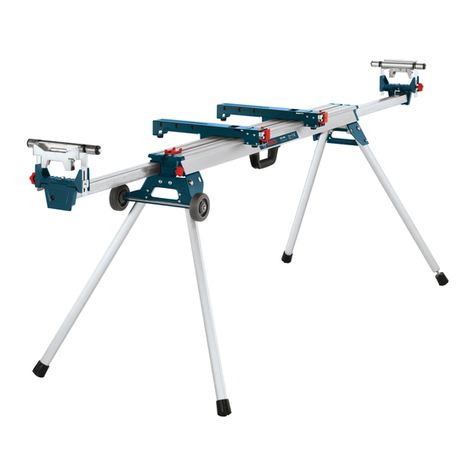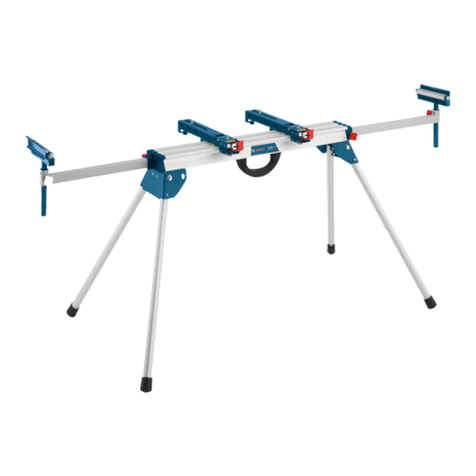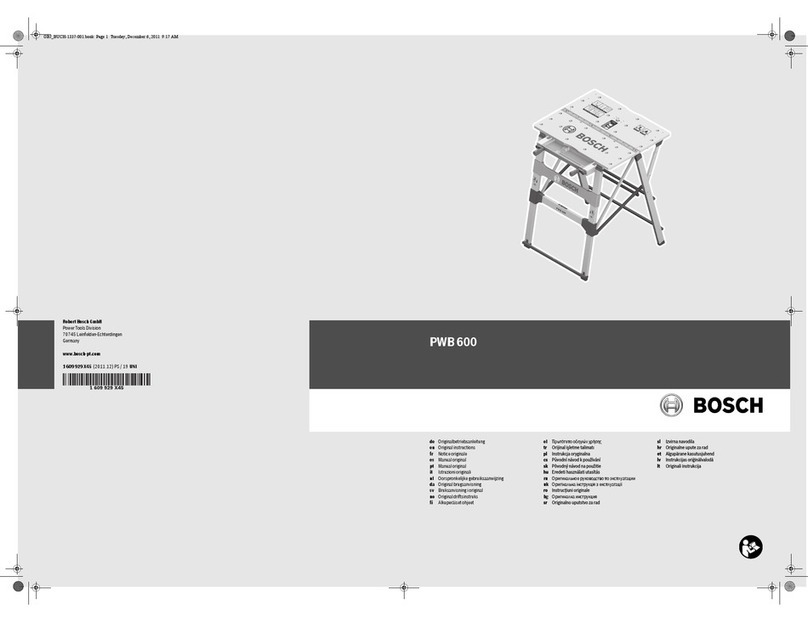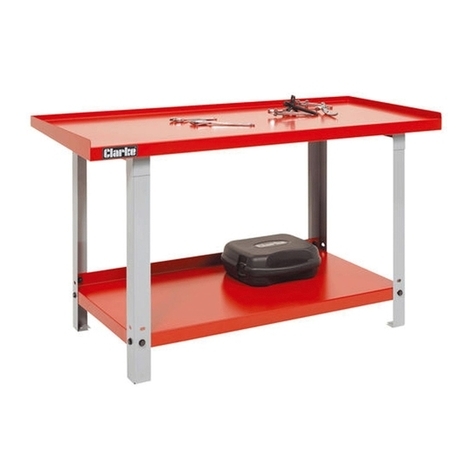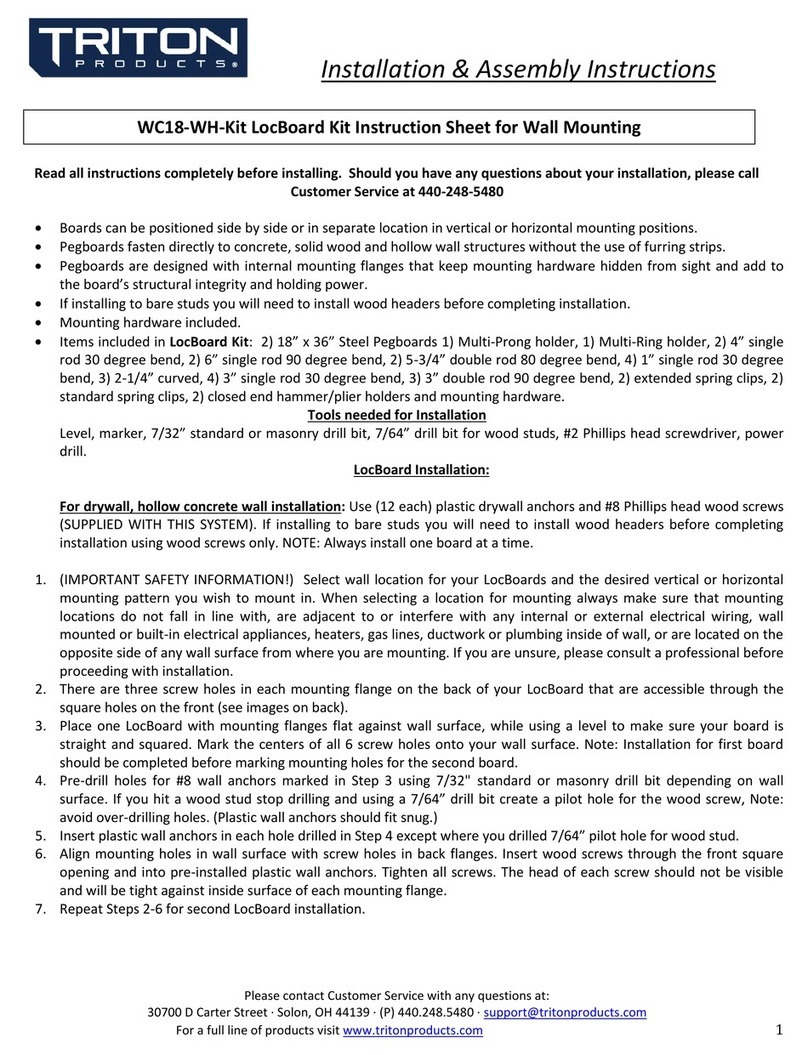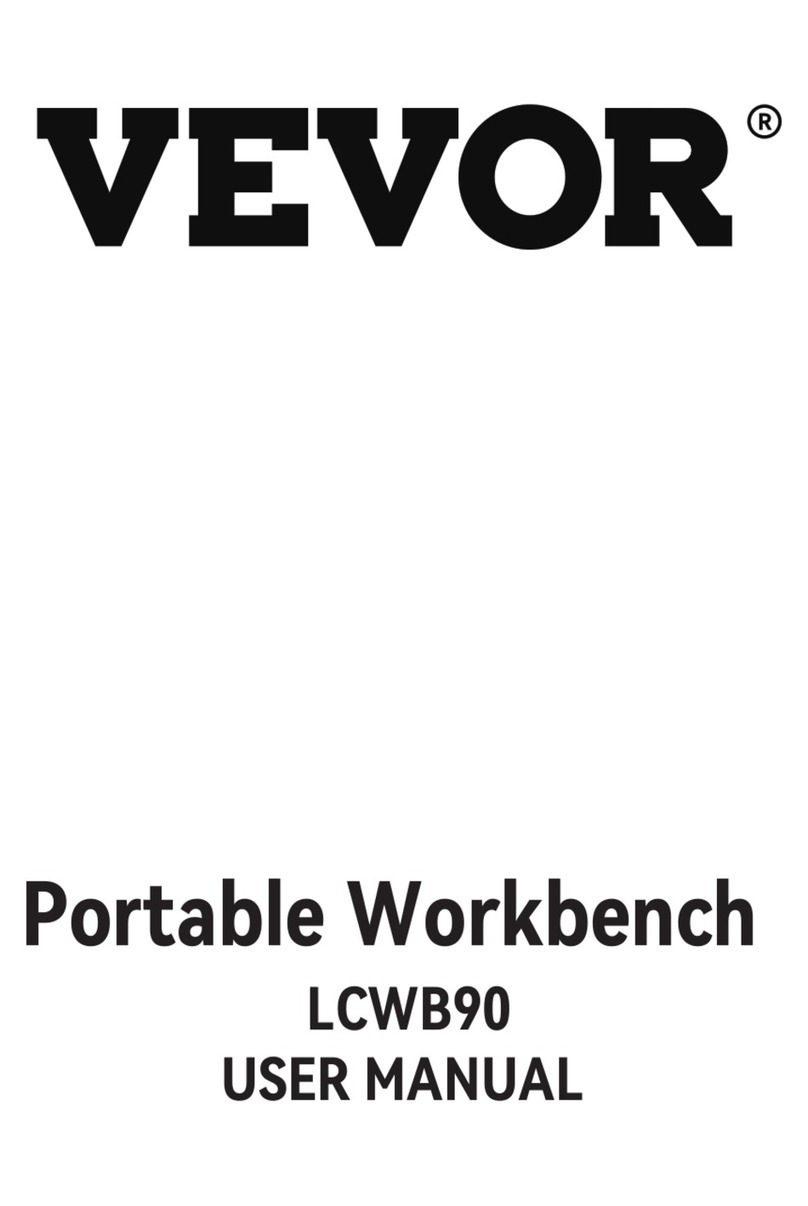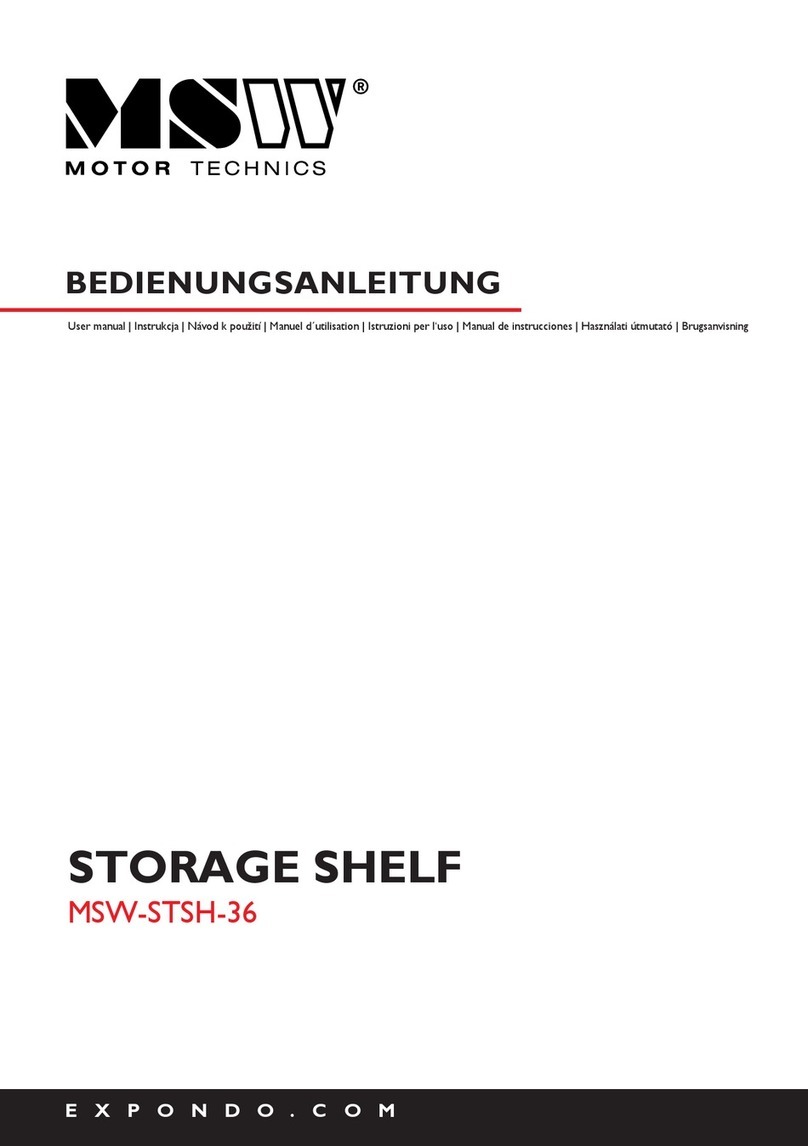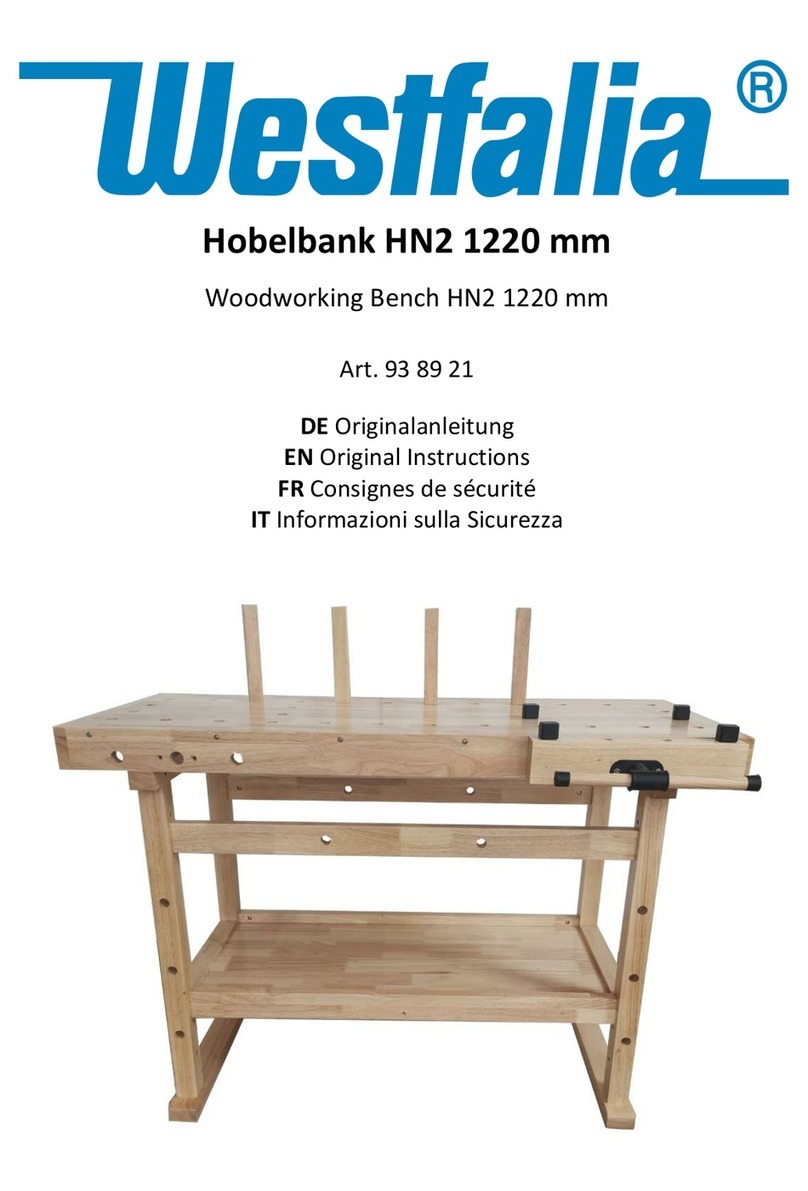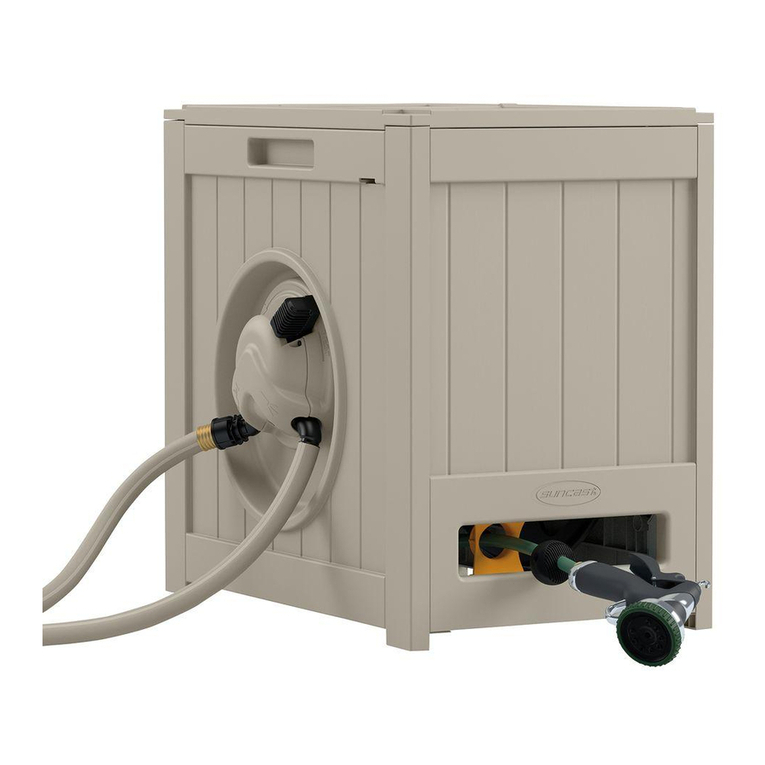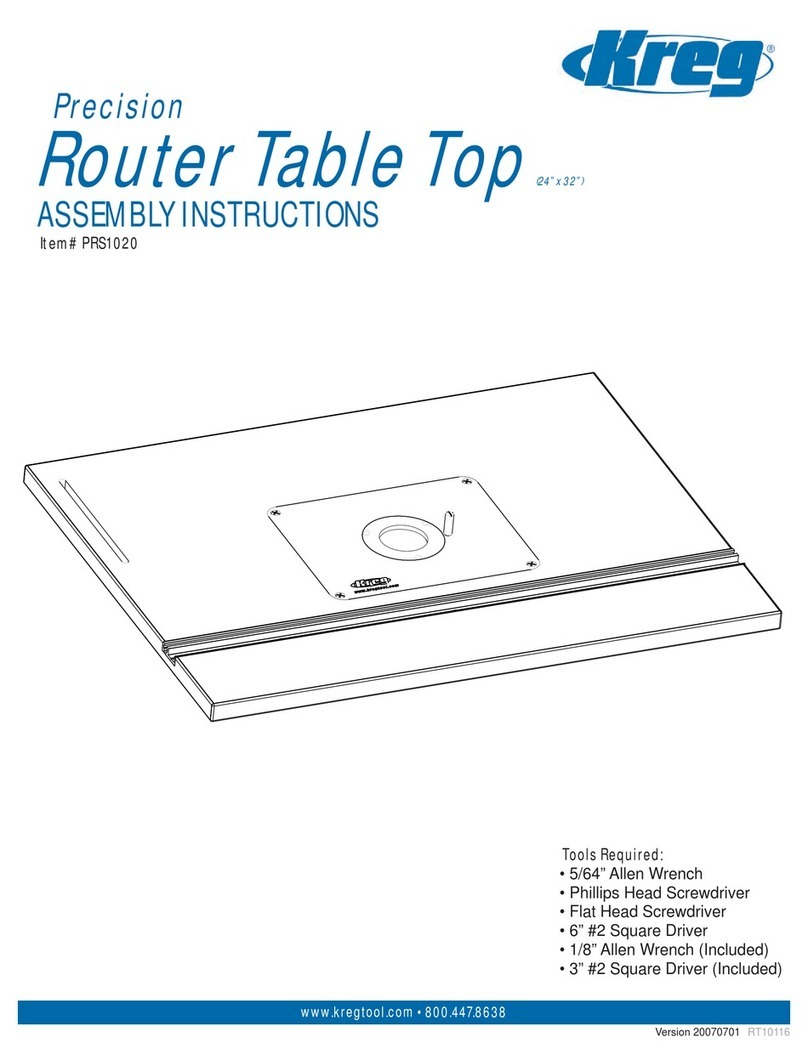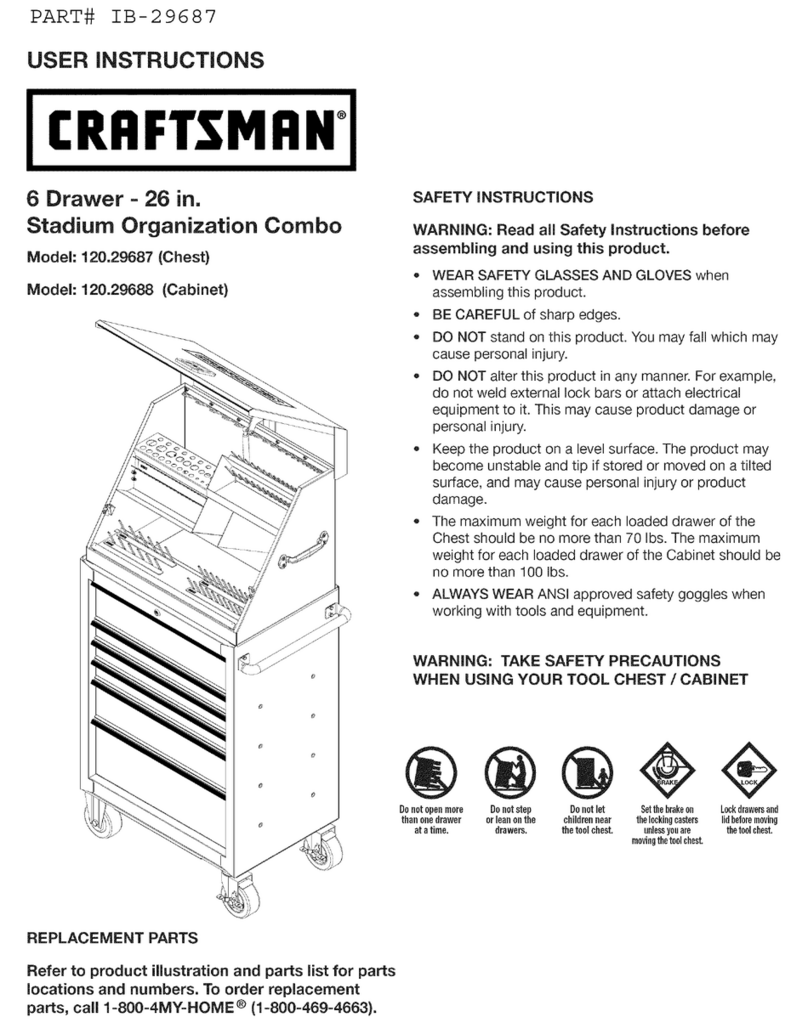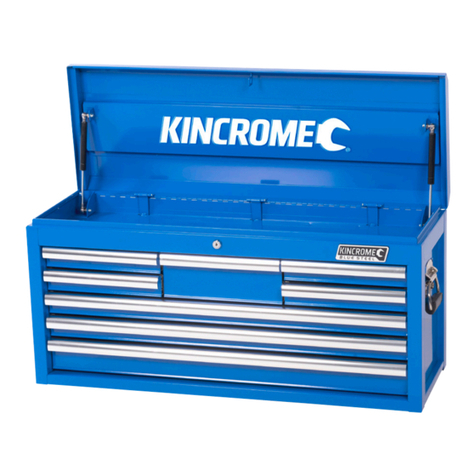Bosch PTA 2400 User manual

Robert Bosch GmbH
Power Tools Division
70745 Leinfelden-Echterdingen
Germany
www.bosch-pt.com
1 609 929 T64 (2011.06) PS / 92 UNI
PTA 2400
de Originalbetriebsanleitung
en Original instructions
fr Notice originale
es Manual original
pt Manual original
it Istruzioni originali
nl Oorspronkelijke
gebruiksaanwijzing
da Original brugsanvisning
sv Bruksanvisning i original
no Original driftsinstruks
fi Alkuperäiset ohjeet
el Ðñùôüôõðï ïäçãéþí ÷ñÞóçò
tr Orijinal işletme talimat
pl Instrukcja oryginalna
cs Původní návod k používání
sk Pôvodný návod na použitie
hu Eredeti használati utasítás
ru Îðèãèíàëüíîå ðóêîâîäñòâî ïî
ýêñïëóàòàöèè
uk Îðèã³íàëüíà ³íñòðóêö³ÿ ç
åêñïëóàòàö³¿
ro Instrucţiuni originale
bg Îðèãèíàëíà èíñòðóêöèÿ
sr Originalno uputstvo za rad
sl Izvirna navodila
hr Originalne upute za rad
et Algupärane kasutusjuhend
lv Instrukcijas oriģinālvalodā
lt Originali instrukcija
OBJ_BUCH-940-003.book Page 1 Friday, June 17, 2011 3:22 PM

2|
1 609 929 T64 | (17.6.11) Bosch Power Tools
Deutsch . . . . . . . . . . . . . . .. . . . . . . . . . . . . . .. . . . . . . . . . .Seite 9
English . . . . . . . . . . . . . . . .. . . . . . . . . . . . . . . . . . . . . . . . . . Page 12
Français . . . . . . . . . . . . . . .. . . . . . . . . . . . . . . . . . . . . . . . . . Page 15
Español . . . . . . . . . . . . . . .. . . . . . . . . . . . . . . . . . . . . . . . .Página 18
Português. . . . . . .. . . . . . . . . . . . . . . .. . . . . . . . . . . . . . . .Página 22
Italiano . . . . . . . . . . . . . . . . . . . . . . . . .. . . . . . . . . . . . . . . .Pagina 25
Nederlands . . . . . . . . . . . . . . . . . . . . .. . . . . . . . . . . . . . . .Pagina 28
Dansk .. . . . . . . . . . . . . . . . . . . . . . . . . . . . . . . . . .. . . . . . . . Side 31
Svenska . . . . . . . . . . . . . . . . . . . . .. . . . . . . . . . . . . . .. . . . . Sida 34
Norsk . . . . . . . . . . . . . . . . . . . .. . . . . . . . . . . . . . . . . . . . . . . Side 37
Suomi. . . . . . . . . . . . .. . . . . . . . . . . . . . . . . . . . . . . . . . . . . . .Sivu 40
ÅëëçíéêÜ. . . . . . . . . . . . . . . . . . . . . . . . . . . . . . . . . . . . . . . . Óåëßäá 42
Türkçe . . . . . . . . . . . . . . . . . . . . . . . . . . . . . . . . . . . . . . . . . Sayfa 46
Polski . . . . . . . . . . . . . . . . . . . .. . . . . . . . . . . . . . .. . . . . . .Strona 49
Česky . . . . . . . . . . . . .. . . . . . . . . . . . . . . .. . . . . . . . . . . . .Strana 52
Slovensky. . . . . . . . . . . . . .. . . . . . . . . . . . . . .. . . . . . . . . .Strana 55
Magyar . . . . . . . . . . . . . . . . . . . . . .. . . . . . . . . . . . . . .. . . . .Oldal 58
Ðóññêèé . . . . . . . . . . . . . . . . . . . . . . . . . . . . . . . . . . . . . Ñòðàíèöà 61
Óêðà¿íñüêà. . . . . . . . . . . . . . . . . . . . . . . . . . . . . . . . . . . .Ñòîð³íêà 64
Română . . . . . . . . . . . . . . .. . . . . . . . . . . . . . .. . . . . . . . . .Pagina 68
Áúëãàðñêè . . . . . . . . . . . . . . . . . . . . . . . . . . . . . . . . . . . Ñòðàíèöà 71
Srpski. . . . . . . . . .. . . . . . . . . . . . . . . . . . .. . . . . . . . . . . . .Strana 74
Slovensko . . . . . . . . . . . . . . . . . . . . . .. . . . . . . . . . . . . . . ..Stran 77
Hrvatski . . . . . . . . . . . . . . .. . . . . . . . . . . . . . .. . . . . . . . Stranica 80
Eesti . . . . . . . . . . .. . . . . . . . . . . . . . . . . . .. . . . . . . . . . .Lehekülg 83
Latviešu . . . . . . . . . . . . . . . . . . . . . . . .. . . . . . . . . . . . . . Lappuse 86
Lietuviškai . . . . . . . . . . . . . . . .. . . . . . . . . . . . . . .. . . . . Puslapis 89
OBJ_BUCH-940-003.book Page 2 Friday, June 17, 2011 3:22 PM

| 3
Bosch Power Tools 1 609 929 T64 | (17.6.11)
2
6
8
8
3
4
7
9
1
5
1110
OBJ_BUCH-940-003.book Page 3 Friday, June 17, 2011 3:22 PM

1 609 929 T64 | (17.6.11) Bosch Power Tools
4|
PTA 2400
2x 2
2x 8
12
2x 7
2x 6
4x M8 x 15 4x M8 x 50
4x
4x
4x
4x
4x
2x M6 x 46
2x 1
2x 5
13
OBJ_BUCH-940-003.book Page 4 Friday, June 17, 2011 3:22 PM

| 5
Bosch Power Tools 1 609 929 T64 | (17.6.11)
A1
A2
B1 B2
3
10
8
6
78
9
14
4
M6 x 46
OBJ_BUCH-940-003.book Page 5 Friday, June 17, 2011 3:22 PM

1 609 929 T64 | (17.6.11) Bosch Power Tools
6|
C1
C2
C3
1
12
12
1
2
16
5
5
15
15
OBJ_BUCH-940-003.book Page 6 Friday, June 17, 2011 3:22 PM

| 7
Bosch Power Tools 1 609 929 T64 | (17.6.11)
D1
D2
D3
13
13
OBJ_BUCH-940-003.book Page 7 Friday, June 17, 2011 3:22 PM

1 609 929 T64 | (17.6.11) Bosch Power Tools
8|
F1 F2
G H
18
7
17
9
10
11
8
6
OBJ_BUCH-940-003.book Page 8 Friday, June 17, 2011 3:22 PM

Deutsch | 9
Bosch Power Tools 1 609 929 T64 | (17.6.11)
Deutsch
Sicherheitshinweise
Allgemeine Sicherheitshinweise
Lesen Sie alle dem Arbeitstisch oder dem zu
montierenden Elektrowerkzeug beigefüg-
ten Warnhinweise und Anweisungen. Ver-
säumnisse bei der Einhaltung der Sicherheits-
hinweise und Anweisungen können
elektrischen Schlag, Brand und/oder schwere
Verletzungen verursachen.
Sicherheitshinweise für Arbeitstische
fZiehen Sie den Stecker aus der Steckdose und/oder
entnehmen Sie den Akku vom Elektrowerkzeug, bevor
SieGeräteeinstellungenvornehmenoder Zubehörteile
wechseln. Unbeabsichtigter StartvonElektrowerkzeugen
ist die Ursache einiger Unfälle.
fBauen Sie den Arbeitstisch korrekt auf, bevor Sie das
Elektrowerkzeug montieren. Einwandfreier Aufbau ist
wichtig, um das Risiko eines Zusammenbrechens zu ver-
hindern.
fBefestigen Sie das Elektrowerkzeug sicher am Arbeits-
tisch, bevor Sie es benutzen. Ein Verrutschen des Elek-
trowerkzeugs auf dem Arbeitstisch kann zum Verlust der
Kontrolle führen.
fStellen Sie den Arbeitstisch auf eine feste, ebene und
waagerechte Fläche. Wenn der Arbeitstisch verrutschen
oder wackeln kann, können das Elektrowerkzeug oder das
Werkstück nicht gleichmäßig und sicher geführt werden.
fÜberlasten Sie den Arbeitstisch nicht und verwenden
Sie diesen nicht als Leiter oder Gerüst. Überlastung
oder Stehen auf dem Arbeitstisch kann dazu führen, dass
sich der Schwerpunkt des Arbeitstischs nach oben verla-
gert und dieser umkippt.
fAchten Sie darauf, dass beim Transport und beim Ar-
beiten sämtliche Schrauben und Verbindungselemen-
te fest angezogen sind. Die Aufnahme-Sets für das
Elektrowerkzeug müssen immer fest arretiert sein. Lo-
ckere Verbindungen können zu Instabilitäten und unge-
nauen Sägevorgängen führen.
fMontieren und demontieren Sie das Elektrowerkzeug
nur, wenn es in Transportstellung ist (Hinweise zur
Transportstellung siehe auch Betriebsanleitung des je-
weiligen Elektrowerkzeugs). Das Elektrowerkzeug kann
sonst einen so ungünstigen Schwerpunkt haben, dass Sie
es nicht sicher halten können.
fBetreiben Sie das auf dem Aufnahme-Set befestigte
Elektrowerkzeug ausschließlich auf dem Arbeitstisch.
Ohne den Arbeitstisch steht das Aufnahme-Set mit dem
Elektrowerkzeug nicht sicher und kann kippen.
fStellen Sie sicher, dass lange und schwere Werkstücke
den Arbeitstisch nicht aus demGleichgewichtbringen.
Lange und schwere Werkstücke müssen am freien Ende
unterlegt oder abgestützt werden.
fBringen Sie beim Zusammenschieben oder Auseinan-
derziehen des Arbeitstisches ihre Finger nicht in die
Nähe der Gelenkpunkte. Die Finger könnten einge-
quetscht werden.
Symbole
Die nachfolgenden Symbole können für den Gebrauch Ihres
Arbeitstisches von Bedeutung sein. Prägen Sie sich bitte die
Symbole und ihre Bedeutung ein. Die richtige Interpretation
der Symbole hilft Ihnen, den Arbeitstisch besser und sicherer
zu gebrauchen.
Produkt- und Leistungsbeschreibung
Bestimmungsgemäßer Gebrauch
Der Arbeitstisch ist bestimmt, ausschließlich folgende Statio-
närsägen von Bosch aufzunehmen (Stand 2011.06):
Zusammen mit dem Elektrowerkzeug ist der Arbeitstisch be-
stimmt zum Ablängen von Brettern und Profilen.
Abgebildete Komponenten
Die Nummerierung der abgebildeten Komponenten bezieht
sich auf die Darstellung des Arbeitstisches auf den Grafiksei-
ten.
1Aufnahme-Set
2Aufnahmeadapter
3Sicherungsstift der Arbeitstisch-Beine
4Höhenverstellbarer Fuß
5Feststellknauf des Aufnahme-Sets 1
6Längenanschlag
7Feststellknauf des Längenanschlags 6
8Werkstückauflage
9Feststellknauf der Werkstückauflage 8
10 Tischverlängerung
11 Sicherungsstift der Tischverlängerung 10
12 Befestigungsset Aufnahmeadapter
13 Befestigungsset Elektrowerkzeug
14 Kontermutter
15 Befestigungsbohrung
16 Montage-Gleitplatte
17 Feststellknauf der Tischverlängerung 10
18 Einstellschraube des Aufnahme-Sets 1
Symbol Bedeutung
Die maximale Tragfähigkeit (Elektro-
werkzeug + Werkstück) des Arbeitsti-
sches beträgt 160 kg.
– PCM 7 3 603 M01 2..
– PCM7S 3603M013..
– PCM8S 3603L020..
– PCM 10 3 603 L01 0..
160
kg
OBJ_BUCH-940-003.book Page 9 Friday, June 17, 2011 3:22 PM

10 | Deutsch
1 609 929 T64 | (17.6.11) Bosch Power Tools
Abgebildetes oder beschriebenes Zubehör gehört nicht zum Stan-
dard-Lieferumfang. Das vollständige Zubehör finden Sie in unse-
rem Zubehörprogramm.
Technische Daten
Montage
Lieferumfang
Beachten Sie dazu die Darstellung des Liefe-
rumfangs am Anfang der Betriebsanleitung.
Prüfen Sie vor der Montage des Arbeitsti-
sches, ob alle unten aufgeführten Teile mit-
geliefert wurden:
Zusätzlich zum Lieferumfang benötigte Werkzeuge:
– Kreuzschlitzschraubendreher
– Schraubenschlüssel
Arbeitstisch montieren
– EntnehmenSieallemitgeliefertenTeile vorsichtigausihrer
Verpackung.
– Entfernen Sie sämtliches Packmaterial.
Arbeitstisch aufstellen (siehe Bilder A1–A2)
– Legen Sie den Arbeitstisch mit den Beinen nach oben auf
den Boden.
– Drücken Sie den Sicherungsstift 3nach innen und schwen-
ken Sie das Bein nach oben bis der Sicherungsstift wieder
hörbar einrastet.
– Wiederholen Sie diesen Arbeitsschritt mit den anderen
drei Beinen.
– Drehen Sie den Arbeitstisch um in die Arbeitsposition.
Das Herstellerlogo muss lesbar nach vorne zeigen.
– Vergewissern Sie sich, dass der Arbeitstisch stabil ist und
alle Sicherungsstifte eingerastet sind.
Ein höhenverstellbarer Fuß 4hilft Ihnen dabei den Arbeits-
tisch auszurichten.
– Lösen Sie die Kontermutter 14und schrauben Sie den Fuß
solange ein oder aus, bis der Arbeitstisch eben ausgerich-
tet ist und alle vier Beine auf dem Boden stehen.
Längenanschlag und Werkstückauflage montieren
(siehe Bilder B1–B2)
– Verschrauben Sie den Längenanschlag 6mithilfe der
Schraube M6x46und des Feststellknaufs 7mit der Werk-
stückauflage 8.
– Stecken Sie die Werkstückauflage 8in die Tischverlänge-
rung 10.
– Ziehen Sie zum Arretieren der Werkstückauflage den Fest-
stellknauf 9an.
– Wiederholen Sie diese Arbeitsschritte mit der zweiten
Werkstückauflage.
Arbeitstisch vorbereiten
Aufnahme-Sets vorbereiten (siehe Bilder C1–C3)
– Setzen Sie die beiden Aufnahme-Sets 1so auf den Arbeits-
tisch, dass die Beschriftung lesbar ist.
– Ziehen Sie die beiden Feststellknäufe 5lose an.
– Setzen Sie die Aufnahmeadapter 2mit der flachen Seite
nachobenaufdiebeidenAufnahme-Setsund verschieben
Sie sie soweit, dass die Befestigungsbohrungen 15 zur De-
ckung gebracht werden.
– Führen Sie jeweils zwei Montage-Gleitplatten 16 (quer,
mit der flachen Seite nach oben) von hinten in das Füh-
rungsfach der Aufnahme-Sets 1ein.
Verschieben Sie die Montage-Gleitplatten soweit, dass sie
mit den Befestigungsbohrungen 15 zur Deckung gebracht
werden.
– Verschrauben Sie Aufnahme-Set und Aufnahmeadapter
lose mit Hilfe der Unterlegscheiben und Sechskantschrau-
ben aus dem Befestigungsset 12.
– Ziehen Sie danach beide Feststellknäufe 5der Aufnahme-
Sets fest an.
Arbeitstisch PTA 2400
Sachnummer 3 603 M05 0..
Länge Arbeitstisch ohne Tisch-
verlängerung mm 1220
Länge Arbeitstisch mit Tischver-
längerung mm 2440
Höhe Arbeitstisch mm 820
max. Tragfähigkeit (Elektrowerk-
zeug + Werkstück)
ohne Tischverlängerung
– Aufnahme-Sets kg 160
max. Tragfähigkeit (Elektrowerk-
zeug + Werkstück)
mit Tischverlängerung
– Aufnahme-Sets
– je Tischverlängerung
kg
kg
110
25
Gewicht entsprechend EPTA-
Procedure 01/2003 kg 20,4
Nr. Bezeichnung Anzahl
Arbeitstisch PTA 2400 1
1
5
Aufnahme-Set
Feststellknauf des Aufnahme-Sets
2
2
2Aufnahmeadapter 2
12 Befestigungsset Aufnahmeadapter
bestehend aus:
– Montage-Gleitplatte
– Sechskantschraube (M8 x 15)
– Unterlegscheibe
4
4
4
8Werkstückauflage 2
6
7
Längenanschlag
Feststellknauf des Längenanschlags
Schlossschraube (M6 x 46)
2
2
2
13 Befestigungsset Elektrowerkzeug
bestehend aus:
– Sechskantschraube (M8 x 50)
– Unterlegscheibe
– Flügelmutter
4
8
4
OBJ_BUCH-940-003.book Page 10 Friday, June 17, 2011 3:22 PM

Deutsch | 11
Bosch Power Tools 1 609 929 T64 | (17.6.11)
Elektrowerkzeug auf den Aufnahme-Sets befestigen
(siehe Bilder D1–D3)
– Bringen Sie das Elektrowerkzeug in die Transportstellung.
Hinweise zur Transportstellung finden Sie in der Be-
triebsanleitung des jeweiligen Elektrowerkzeugs.
– Positionieren Sie das Elektrowerkzeug so auf dem vorde-
ren Aufnahmeadapter, dass die vorderen Montagebohrun-
gen am Elektrowerkzeug mit den Langlöchern des Aufnah-
meadapters zur Deckung gebracht werden.
– VerschraubenSieden vorderenAufnahmeadapterunddas
Elektrowerkzeug mit den Sechskantschrauben, Unterleg-
scheiben und Flügelmuttern aus dem Befestigungsset 13.
– Verschieben Sie den hinteren Aufnahmeadapter so, dass
die hinteren Montagebohrungen am Elektrowerkzeug mit
den Langlöchern des Aufnahmeadapters zur Deckung ge-
bracht werden.
– Verschrauben Sie den hinteren Aufnahmeadapter und das
Elektrowerkzeug mit den Sechskantschrauben, Unterleg-
scheiben und Flügelmuttern aus dem Befestigungsset 13.
– Richten Sie die Aufnahmeadapter 2gleichmäßig aus.
Die aufgeprägte Skala hilft Ihnen dabei den gleichen Ab-
stand auf beiden Seiten einzustellen.
– Ziehen Sie zum Abschluss alle Schrauben des Befesti-
gungssets 12 (Aufnahme-Adapter) und alle Flügelmuttern
des Befestigungssets 13 (Elektrowerkzeug) fest an.
Betrieb
Arbeitshinweise
Überlasten Sie den Arbeitstisch nicht. Beachten Sie immer
diemaximaleTragfähigkeitdesArbeitstischesundderbeiden
Tischverlängerungen.
Halten Sie das Werkstück immer gut fest, besonders den län-
geren, schwereren Abschnitt. Nach dem Durchtrennen des
Werkstücks kann sich der Schwerpunkt so ungünstig verla-
gern, dass der Arbeitstisch kippt.
Legen Sie das Werkstück wenn möglich immer auf eine oder
auf beide Werkstückauflagen.
Arbeitstisch verlängern (siehe Bilder F1–F2)
Lange Werkstücke müssen am freien Ende unterlegt oder ab-
gestützt werden.
– LegenSieIhrlangesWerkstückaufden Sägetisch des Elek-
trowerkzeugs.
– Lösen Sie den Feststellknauf 17 und ziehen Sie die Tisch-
verlängerung 10 bis zum gewünschten Abstand nach au-
ßen.
Durch den Sicherungsstift 11 kann die Tischverlängerung
nur bis zum Anschlag herausgezogen werden.
– Ziehen Sie diesen Feststellknauf wieder an.
– Lösen Sie den Feststellknauf 9und passen Sie die Höhe
der Werkstückauflage 8so an, dass ihr Werkstück gerade
aufliegt.
Das Werkstück muss plan auf dem Sägetisch des Elektro-
werkzeugs aufliegen.
– Ziehen Sie diesen Feststellknauf wieder an.
Gleich lange Werkstücke sägen (siehe Bild G)
Zum einfachen Sägen von gleich langen Werkstücken können
Sie den Längenanschlag 6verwenden.
– Stellen Sie die gewünschte Werkstücklänge ein.
(siehe Bilder F1–F2)
– Lösen Sie den Feststellknauf 7und positionieren Sie den
Längenanschlag6imgewünschten AbstandzumSägeblatt
des Elektrowerkzeugs.
– Ziehen Sie diesen Feststellknauf wieder an.
Klammer des Aufnahme-Sets einstellen
(siehe Bild H)
Die Klammer, die das Aufnahme-Set 1mit Hilfe des Feststell-
knaufs 5auf dem Arbeitstisch arretiert, müssen Sie nach in-
tensivem Gebrauch des Arbeitstisches gegebenenfalls ein-
stellen.
– Entfernen Sie das Elektrowerkzeug von den Aufnahme-
Sets.
– Drehen Sie das Aufnahme-Set um.
– Drehen Sie die Einstellschraube 18 im Uhrzeigersinn,
wenn das Aufnahme-Set trotz festem Anziehen des Fest-
stellknaufs auf dem Arbeitstisch nicht arretiert werden
kann.
Drehen Sie die Einstellschraube 18 gegen den Uhrzeiger-
sinn, wenn das Aufnahme-Set nicht gleichzeitig auf beide
Schienen (vorn und hinten) des Arbeitstisches passt.
– Überprüfen Sie den festen und korrekten Sitz des Aufnah-
me-Sets und wiederholen Sie gegebenenfalls die Einstel-
lung.
– Wiederholen Sie die Arbeitsschritte mit dem zweiten Auf-
nahme-Set.
Wartung und Service
Wartung
Sollte der Arbeitstisch trotz sorgfältiger Herstellungs- und
Prüfverfahreneinmalausfallen, ist die Reparatur von einer au-
torisierten Kundendienststelle für Bosch-Elektrowerkzeuge
ausführen zu lassen.
Geben Sie bei allen Rückfragen und Ersatzteilbestellungen
bitte unbedingt die 10-stellige Sachnummer laut Typenschild
des Arbeitstisches an.
Kundendienst und Kundenberatung
Der Kundendienst beantwortet Ihre Fragen zu Reparatur und
Wartung Ihres Produkts sowie zu Ersatzteilen. Explosions-
zeichnungen und Informationen zu Ersatzteilen finden Sie
auch unter:
www.bosch-pt.com
Das Bosch-Kundenberater-Team hilft Ihnen gerne bei Fragen
zu Kauf, Anwendung und Einstellung von Produkten und Zu-
behören.
www.bosch-do-it.de, das InternetportalfürHeimwerker und
Gartenfreunde.
www.dha.de,daskompletteService-AngebotderDeutschen
Heimwerker Akademie.
OBJ_BUCH-940-003.book Page 11 Friday, June 17, 2011 3:22 PM

12 | English
1 609 929 T64 | (17.6.11) Bosch Power Tools
Deutschland
Robert Bosch GmbH
Servicezentrum Elektrowerkzeuge
Zur Luhne 2
37589 Kalefeld – Willershausen
Tel. Kundendienst: +49 (1805) 70 74 10*
Fax: +49 (1805) 70 74 11*
(*Festnetzpreis 14 ct/min, höchstens 42 ct/min aus Mobil-
funknetzen)
E-Mail: Servicezentrum.Elekt[email protected]
Tel. Kundenberatung: +49 (1803) 33 57 99
(Festnetzpreis 9 ct/min, höchstens 42 ct/min aus Mobilfunk-
netzen)
Fax: +49 (711) 7 58 19 30
E-Mail: kundenberatung.ew@de.bosch.com
Österreich
Tel.: +43 (01) 7 97 22 20 10
Fax: +43 (01) 7 97 22 20 11
E-Mail: service.elektrowerkzeuge@at.bosch.com
Schweiz
Tel.: +41 (044) 8 47 15 11
Fax: +41 (044) 8 47 15 51
Luxemburg
Tel.: +32 (070) 22 55 65
Fax: +32 (070) 22 55 75
E-Mail: [email protected]osch.com
Entsorgung
Arbeitstisch, Zubehör und Verpackungen sollen einer um-
weltgerechten Wiederverwertung zugeführt werden.
Änderungen vorbehalten.
English
Safety Notes
General Safety Rules
Read all warning notes and instructions en-
closedwiththesawstandandthepowertool
to be mounted. Failure to follow the warnings
and instructions may result in electric shock,
fire and/or serious injury.
Safety Warnings for Saw Stands
fPull the plug from the mains receptacle and/or remove
the battery from the power tool before making adjust-
ments on the tool or changing tool accessories. Unin-
tentional switching on of the power tool is the cause of
many accidents.
fAssemble the saw stand in the proper manner before
mounting the power tool. Proper assembly is important
to prevent the risk of a collapse of the saw stand.
fAttach the power tool securely to the sawstand before
using it. Slipping off of the power tool on the saw stand
can lead to loss of control.
fPlace the saw stand on a firm, level and horizontal sur-
face. If the saw stand can slip off or wobbles, the power
tool or the workpiece cannot be uniformly and securely
guided.
fDo not overload the saw stand and do not use it as a lad-
der or scaffolding. Overloading or standing on the saw
stand can lead to the upward shifting of the centre of grav-
ity of the stand and its tipping over.
fWhen working or transporting, take care that all bolts
and connecting elements are firmly tightened. The at-
tachment sets for the power tool must always be firmly
locked. Loose connections can lead to instability and inex-
act sawing.
fMount and dismount the power tool only when it is in
the transport position (for instructions on the trans-
port position, also see the operating instructions of the
respective power tool). Otherwise, the power tool can
have such an unfavourable centre of gravity that it cannot
be held securely.
fWhen the power tool is mounted to the attachmentset,
operate it exclusively on the saw stand. Without the saw
stand, the attachment set with the power tool does not
stand securely and can tip over.
fEnsure that long and heavy workpieces do not affect
the equilibrium of the saw stand. Long and/or heavy
workpieces must be supported at the free end.
fKeep your fingers clear of the hinge points while push-
ing the saw stand together or pulling it apart. Danger of
fingers being crushed or contused.
Symbols
The following symbols can be important for the operation of
your saw stand. Please memorise the symbols and their
meanings. The correct interpretation of the symbols helps
you operate the saw stand better and more secure.
Product Description and Specifica-
tions
Intended Use
The saw stand is intended exclusively for mounting the follow-
ing stationary Bosch saws (as of 2011.06):
Symbol Meaning
The maximum carrying capacity (pow-
er tool + workpiece) of the saw stand
is 160 kg.
– PCM 7 3 603 M01 2..
– PCM7S 3603M013..
– PCM8S 3603L020..
– PCM 10 3 603 L01 0..
160
kg
OBJ_BUCH-940-003.book Page 12 Friday, June 17, 2011 3:22 PM

English | 13
Bosch Power Tools 1 609 929 T64 | (17.6.11)
Together with the power tool, the saw stand is intended for
the cutting to length of boards and profiles.
Product Features
The numbering of the product features refersto the illustra-
tion of the saw stand on the graphics pages.
1Attachment set
2Retaining adapter
3Locking pin of the saw stand legs
4Height-adjustable leg
5Locking knob of the attachment set 1
6Material stop
7Locking knob of the length stop 6
8Workpiece support
9Locking knob of the workpiece support 8
10 Table extension
11 Locking pin of the table extension 10
12 Fastening kit, retaining adapter
13 Fastening kit, power tool
14 Lock nut
15 Fastening hole
16 Assembly-sliding plate
17 Locking knob of the table extension 10
18 Adjustment screw of the attachment set 1
Accessories shown or described are not part of the standard deliv-
ery scope of the product. A complete overview of accessories can
be found in our accessories program.
Technical Data
Assembly
Delivery Scope
Please also observe the representation of
thedelivery scope atthebeginningoftheop-
erating instructions.
Beforeassemblingthe sawstand,checkifall
parts listed below are provided:
Additionally required tools (not in delivery scope):
– Phillips screwdriver
– Spanner
Assembling the Saw Stand
– Carefully remove all parts included in the delivery from
their packaging.
– Remove all packaging material.
Setting Up the Saw Stand (see figures A1 – A2)
– Lay the saw stand upside down on the floor (legs facing up-
ward).
– Push the locking pin 3in and tilt the leg upward until the
locking pin can be heard to engage.
– Repeat this workstep with the other three legs.
– Turn around the saw stand to the working position.
Themanufacturerlogo must facetowardthefrontsothat it
can be read.
– Ensure that the saw stand is stable and that all locking pins
have engaged.
The saw stand is easily aligned with the height-adjustable leg
4.
– Loosen lock nut 14 and screw the leg in or out until the saw
stand is aligned level and all four legsface against the floor.
Saw stand PTA 2400
Article number 3 603 M05 0..
Length of saw stand without
table extension mm 1220
Length of saw stand with table
extension mm 2440
Height of saw stand mm 820
Max. carrying capacity
(power tool + workpiece)
without table extension
– Attachment set kg 160
Max. carrying capacity
(power tool + workpiece)
with table extension
– Attachment set
– Per table extension
kg
kg
110
25
Weight according to
EPTA-Procedure 01/2003 kg 20.4
No. Designation Quantity
Saw stand PTA 2400 1
1
5
Attachment set
Locking knob of the attachment set
2
2
2Retaining adapter 2
12 Retaining adapter fastening kit
consisting of:
– Assembly-sliding plate
– Hexagon bolt (M8 x 15)
–Washer
4
4
4
8Workpiece support 2
6
7
Length stop
Locking knob of the length stop
Carriage bolt (M6 x 46)
2
2
2
13 Power tool fastening kit
consisting of:
– Hexagon bolt (M8 x 50)
–Washer
–Wingnut
4
8
4
OBJ_BUCH-940-003.book Page 13 Friday, June 17, 2011 3:22 PM

14 | English
1 609 929 T64 | (17.6.11) Bosch Power Tools
Mounting the Length Stop and Workpiece Support
(see figures B1–B2)
– Screw the length stop 6to the workpiece support 8with
carriage bolt M6 x 46 and locking knob 7.
– Insert the workpiece support8into the table extension 10.
– Tighten the locking knob 9to lock the workpiece support.
– Repeat the worksteps with the second workpiece support.
Preparing the Saw Stand
Preparing the Attachment Sets (see figures C1–C3)
– Place both attachment sets 1on the saw stand in such a
manner that the labelling can be read.
–Hand-tighten both locking knobs 5.
– Place the retaining adapters 2with the flat side facing
upward on both attachment sets and move them apart so
that the fastening holes 15 are aligned.
– Guide two assembly-sliding plates 16 each (perpendicu-
lar, with the flat side facing upward) from the rear into the
guide compartment of the attachment sets 1.
Move the assembly-sliding plates apart so that they are
aligned with the fastening holes 15.
–Hand-tighten the attachment sets and retaining adapters
with the washers and hexagon bolts from fastening kit 12.
– Afterwards, firmly tighten both locking knobs 5of the at-
tachment sets.
Fastening the Power Tool to the Attachment Sets
(see figures D1–D3)
– Position the power tool in the transport position. Notes on
the transport position are given in the operating instruc-
tions of the respective power tool.
– Position the power tool on the front retaining adapter in
such a manner that the front mounting holes on the power
tool are brought into alignment with the slots of the retain-
ing adapter.
– Screw the front retaining adapter and the power tool to-
getherwiththehexagonbolts,washersandwingnutsfrom
the fastening kit 13.
– Position the rear retaining adapter in such a manner that
the rear mounting holes on the power tool are brought into
alignment with the slots of the retaining adapter.
– Screw the rear retaining adapter and the power tool to-
getherwiththehexagonbolts,washersandwingnutsfrom
the fastening kit 13.
– Align the retaining adapters 2uniformly.
The imprinted scale aides in adjusting the same clearance
on both sides.
– Finally, firmly tighten all screws of fastening kit 12 (retain-
ing adapter) and all wing nuts of fastening kit 13 (power
tool).
Operation
Working Advice
Do not overload the saw stand. Always observe the maximum
carrying capacity of the saw stand and the two table exten-
sions.
Always hold the workpiece firmly, especially the longer and
more heavy section. After cutting through the workpiece, the
centre of gravity may become dislocated in such an unfavour-
able manner that the saw stand tips over.
If possible, always place the workpiece on one or both work-
piece supports.
Extending the Saw Stand (see figures F1 –F2)
Long workpieces must be underlaid or supported at their free
end.
– Place your long workpiece onto the saw table of the power
tool.
– Loosenlockingknob17 and pullthetable extension10out
to the desired clearance.
Due to locking pin 11, the table extension can only be
pulled out to the stop.
– Retighten the locking knobs again.
– Loosen locking knob 9and adjust the height of the work-
piece support 8so that the workpiece rests level.
The workpiece must be positioned level on the power
tool’s saw table.
– Retighten the locking knobs again.
Sawing Workpieces of the Same Length
(see figure G)
The material stop 6can be used for easily sawing workpieces
to the same length.
– Adjust the desired workpiece length. (see figures F1 – F2)
– Loosenlockingknob7and position thelengthstop6tothe
desired clearance to the saw blade of the power tool.
– Retighten the locking knobs again.
Adjusting the Attachment-set Bracket
(see figure H)
Afterintensiveuseofthe sawstand,thebracketthatlocksthe
attachment set 1to the saw table via the the locking knob 5
may possibly require readjustment.
– Remove the power tool from the attachment sets.
– Turn the attachment set upside down.
– When the attachment set cannot be locked to the saw
stand despite firmly tightening the locking knob, screw the
adjustment screw 18 in clockwise direction.
When the attachment set does not fit onto both rails (front
and rear) of the saw stand at the same time, screw the ad-
justment screw 18 in anticlockwise direction.
– Check the firm and correct seating of the attachment set
and repeat the adjustment, if required.
– Repeat the worksteps with the second attachment set.
Maintenance and Service
Maintenance
If the saw stand should fail despite the care taken in manufac-
tureandtesting,repair shouldbecarriedoutby an authorised
customer services agent for Bosch power tools.
In all correspondence and spare parts orders, please always
include the 10-digit article number given on the type plate of
the saw stand.
OBJ_BUCH-940-003.book Page 14 Friday, June 17, 2011 3:22 PM

Français | 15
Bosch Power Tools 1 609 929 T64 | (17.6.11)
After-sales Service and Customer Assistance
Our after-sales service responds to your questions concern-
ing maintenance and repair of your product as well as spare
parts. Exploded views and information on spare parts can al-
so be found under:
www.bosch-pt.com
Our customer service representatives can answer your ques-
tions concerning possible applications and adjustment of
products and accessories.
Great Britain
Robert Bosch Ltd. (B.S.C.)
P.O. Box 98
Broadwater Park
North Orbital Road
Denham
Uxbridge
UB 9 5HJ
Tel. Service: +44 (0844) 736 0109
Fax: +44 (0844) 736 0146
E-Mail: [email protected]
Ireland
Origo Ltd.
Unit 23 Magna Drive
Magna Business Park
City West
Dublin 24
Tel. Service: +353 (01) 4 66 67 00
Fax: +353 (01) 4 66 68 88
Australia, New Zealand and Pacific Islands
Robert Bosch Australia Pty. Ltd.
Power Tools
Locked Bag 66
Clayton South VIC 3169
Customer Contact Center
Inside Australia:
Phone: +61 (01300) 307 044
Fax: +61 (01300) 307 045
Inside New Zealand:
Phone: +64 (0800) 543 353
Fax: +64 (0800) 428 570
Outside AU and NZ:
Phone: +61 (03) 9541 5555
www.bosch.com.au
Republic of South Africa
Customer service
Hotline: +27 (011) 6 51 96 00
Gauteng – BSC Service Centre
35 Roper Street, New Centre
Johannesburg
Tel.: +27 (011) 4 93 93 75
Fax: +27 (011) 4 93 01 26
E-Mail: [email protected]
KZN – BSC Service Centre
Unit E, Almar Centre
143 Crompton Street
Pinetown
Tel.: +27 (031) 7 01 21 20
Fax: +27 (031) 7 01 24 46
E-Mail: bsc.dur@za.bosch.com
Western Cape – BSC Service Centre
Democracy Way, Prosperity Park
Milnerton
Tel.: +27 (021) 5 51 25 77
Fax: +27 (021) 5 51 32 23
E-Mail: [email protected]
Bosch Headquarters
Midrand, Gauteng
Tel.: +27 (011) 6 51 96 00
Fax: +27 (011) 6 51 98 80
E-Mail: rbsa-hq.pt[email protected]
Disposal
The saw stand, accessories and packaging should be sorted
for environmental-friendly recycling.
Subject to change without notice.
Français
Avertissements de sécurité
Indications générales de sécurité
Lisez tous les avertissements et instruc-
tions joints à la table de travail ou à l’outil
électroportatif à assembler. Ne pas suivre
les avertissements et instructions peut provo-
querunchoc électrique, unincendieet/ouune
blessure sérieuse.
Instructions de sécurité pour tables de travail
fDébrancher la fiche de la source d’alimentation en cou-
rant et/ou le bloc de batteries de l’outil avant tout ré-
glage, changement d’accessoires ou avant de ranger
l’outil. Une mise en route involontaire d’outils électropor-
tatifs est une cause courante d’accident.
fMontez correctement la table de travail avant de mon-
ter l’outil électroportatif. Un montage exact est impor-
tant pour éviter le risque que la table ne s’écroule.
fFixez l’outil électroportatif fermement sur la table de
découpe avant de l’utiliser. Un outil électroportatif qui se
déplace sur la table de travail peut entraîner une perte de
contrôle.
fMontez la table de travail sur une surface solide, plane
et horizontale. Si la table de travail peut se déplacer ou
basculer, il n’est pas possible de guider l’outil électroporta-
tif ou la pièce de façon uniforme et en toute sécurité.
OBJ_BUCH-940-003.book Page 15 Friday, June 17, 2011 3:22 PM

16 | Français
1 609 929 T64 | (17.6.11) Bosch Power Tools
fNe surchargez pas la table de travail et ne l’utilisez pas
en tant qu’échelle ou échafaudage. Le fait de surcharger
la table de travail ou de se placer dessus peut avoir pour
conséquence que le centre de gravité de la table de travail
se déplace vers le haut et qu’elle se renverse.
fVeillez à ce que tous les vis et éléments d’assemblage
soient bien serrés lors du transport et lors du travail.
Les sets de fixation de l’outil électroportatif doivent
toujours être bien bloqués. Des raccords desserrés peu-
vent entraîner des instabilités et des opérations impréci-
ses de sciage.
fNe montez et démontez l’outil électroportatif que lors-
qu’il se trouve en position de transport (pour les indica-
tions concernant la position de transport, voir égale-
ment les instructions d’utilisation de l’outil
électroportatif respectif). Sinon, le centre de gravité de
l’outil électroportatif peut être défavorable de sorte que
vous ne puissiez pas le tenir en toute sécurité.
fN’utilisez l’outil électroportatif monté sur le set de fixa-
tionquesurlatablede travail.Sanstabledetravail,le set
de fixation avec l’outil électroportatif n’est pas stable et
peut basculer.
fAssurez-vous que les pièces longues et lourdes ne dé-
séquilibrent pas la table de travail. Les extrémités libres
des pièces longues et lourdes doivent être soutenues.
fTenez toujours vos doigts à l’écart des points d’articu-
lation lorsque vous pliez ou dépliez la table de travail.
Vos doigts pourraient être coincés.
Symboles
Les symboles suivants peuvent être importants pour l’utilisa-
tion de votre table de travail. Veuillez mémoriser ces symbo-
les et leurs significations. L’interprétation correcte des sym-
bolesvouspermettrademieuxutiliser votre table detravail et
en toute sécurité.
Description et performances du pro-
duit
Utilisation conforme
La table de travail est conçue pour intégrer exclusivement les
scies stationnaires suivantes de Bosch (version 2011.06) :
Avec l’outil électroportatif, la table de travail est conçue pour
le découpage de planches et de profilés.
Eléments de l’appareil
Lanumérotationdesélémentsseréfèreàla représentationde
la table de travail sur les pages graphiques.
1Set de fixation
2Adaptateur
3Tige de blocge des pieds de la table de travail
4Pied, réglable en hauteur
5Bouton de blocage du set de fixation 1
6Butée de longueur
7Bouton de blocage de la butée de longueur 6
8Support de la pièce
9Bouton de blocage du support de la pièce 8
10 Rallonge de table
11 Tige de blocage de la rallonge de table 10
12 Set de montage de l’adaptateur
13 Set de montage de l’outil électroportatif
14 Contre-écrou
15 Alésage de fixation
16 Plaque de glissement
17 Bouton de blocage de la rallonge de table 10
18 Vis de réglage du set de fixation 1
Les accessoires décrits ou illustrés ne sont pas tous compris dans
la fourniture. Vous trouverez les accessoires complets dans notre
programme d’accessoires.
Caractéristiques techniques
Montage
Accessoires fournis
Respectez également l’indication du conte-
nu de l’emballage au début des instructions
d’utilisation.
Avant le montage de la table de travail, véri-
fiez sitoutes les piècesindiquéesci-dessous
ont été fournies :
Symbole Signification
La capacité de charge maximale (outil
électroportatif + pièce) de la table de
travail est de 160 kg.
– PCM 7 3 603 M01 2..
– PCM7S 3603M013..
– PCM8S 3603L020..
– PCM 10 3 603 L01 0..
160
kg
Table de travail PTA 2400
N° d’article 3 603 M05 0..
Longueur de la table de travail
sans rallonge mm 1220
Longueur de la table de travail
avec rallonge mm 2440
Hauteur de la table de travail mm 820
Capacité de charge max.
(outil électroportatif + pièce)
sans rallonge
– Sets de fixation kg 160
Capacité de charge max.
(outil électroportatif + pièce)
avec rallonge
– Sets de fixation
– par rallonge
kg
kg
110
25
Poids suivant EPTA-Procedure
01/2003 kg 20,4
OBJ_BUCH-940-003.book Page 16 Friday, June 17, 2011 3:22 PM

Français | 17
Bosch Power Tools 1 609 929 T64 | (17.6.11)
D’autres outils nécessaires, pas fournis avec l’appareil :
– Tournevis pour vis à tête cruciforme
–Clé
Montage de la table de travail
– Retirez avec précaution de l’emballage toutes les pièces
fournies.
– Enlevez tout emballage.
Installer la table de travail (voir figures A1 – A2)
– Posez la table de travail sur le sol, les pieds vers le haut.
– Poussez la tige de blocage 3vers l’intérieur et basculez le
pied vers le haut jusqu’à ce que la tige de blocage s’encli-
quette à nouveau de façon perceptible.
– Répétez cette opération avec les trois autres pieds.
– Retournez la table de travail pour la mettre en position de
travail.
Le logo du fabricant doit être lisible par l’avant.
– Assurez-vous à ce que la table de travail soit stable et que
toutes les tiges de blocage se soient encliquetées.
Un pied réglable en hauteur 4vous aide à aligner la table de
travail.
– Desserrez le contre-écrou 14 et vissez ou dévissez le pied
jusqu’à ce que la table de travail soit alignée horizontale-
ment et que les quatre pieds touchent le sol.
Monter la butée de longueur et le support de table
(voirfiguresB1–B2)
– Vissez la butée de longueur 6à l’aide de la vis M6 x 46 et
du bouton de blocage 7au support de table 8.
– Enfoncez le support de la pièce 8dans la rallonge 10.
– Pour bloquer le support de la pièce, serrez le bouton de
blocage 9.
– Répétez cette opération avec le deuxième support de la
pièce.
Préparation de la table de travail
Préparer les sets de fixation (voir figures C1–C3)
– Montez les deux sets de fixation 1sur la table de travail de
sorte à ce que l’inscription soit lisible.
–Serrez5légèrement les deux boutons de blocage.
– Montez les adaptateurs2,lecôtéplanversle haut, sur les
deux sets de fixation et déplacez-les de sorte à faire coïnci-
der les alésages de fixation 15.
– Introduisez deux plaques de glissement 16 (perpendicu-
lairement, le côté plat vers le haut) par l’arrière dans le
trou longitudinal des sets de fixation 1.
Déplacez les plaques de glissement de sorte à les faire
coïncider avec les alésages de fixation 15.
– Serrezleset de fixationetl’adaptateurlégèrement àl’aide
des rondelles et des vis hexagonales du set de fixation 12.
– Ensuite, serrez les deux boutons de blocage 5des sets de
fixation fermement.
Monter l’outil électroportatif sur les sets de fixation
(voir figures D1–D3)
– Mettezl’outilélectroportatifen positiondetransport.Vous
trouverez des indications pour la position de transport
dans les instructions d’utilisation de l’outil électroportatif
respectif.
– Positionnez l’outil électroportatif sur l’adaptateur avant de
sorte à faire coïncider les alésages de fixation avant de
l’outil électroportatif avec les trous longitudinaux de
l’adaptateur.
– Vissez l’adaptateur avant et l’outil électroportatif avec les
vis hexagonales, les rondelles et les vis papillon du set de
fixation 13.
– Déplacez l’adaptateur arrière de sorte à faire coïncider les
alésages de fixation arrière de l’outil électroportatif avec
les trous longitudinaux de l’adaptateur.
– Vissez l’adaptateur arrière et l’outil électroportatif avec les
vis hexagonales, les rondelles et les vis papillon du set de
fixation 13.
– Alignez l’adaptateur 2régulièrement.
La graduation marquée vous aide à régler la même distan-
ce des deux côtés.
– A la fin, serrez fermement toutes les vis du set de fixation
12 (adaptateur) et toutes les vis papillon du set de fixation
13 (outil électroportatif).
Mise en marche
Instructions d’utilisation
Ne surchargez pas la table de travail. Respectez toujours la ca-
pacité de charge maximale de la table de travail et des deux
rallonges.
Tenez toujours bien la pièce, surtout la partie plus longue et
plus lourde. Une fois la pièce découpée, le centre de gravité
peut se déplacer infavorablement de sorte que la table de tra-
vail bascule.
Si possible, placez la pièce toujours sur un ou sur les deux
supports.
N° Désignation Nombre
Table de travail PTA 2400 1
1
5
Set de fixation
Bouton de blocage du set de fixation
2
2
2Adaptateur 2
12 Set de montage de l’adaptateur
comprenant :
– Plaque de glissement
– Boulon à tête hexagonale (M8 x 15)
– Rondelle
4
4
4
8Support de la pièce 2
6
7
Butée de longueur
Bouton de blocage de la butée longitudi-
nale
Boulon brut à tête bombée (M6 x 46)
2
2
2
13 Set de montage de l’outil électroportatif
comprenant :
– Boulon à tête hexagonale (M8 x 50)
– Rondelle
– Ecrou papillon
4
8
4
OBJ_DOKU-27090-001.fm Page 17 Friday, June 17, 2011 3:37 PM

18 | Español
1 609 929 T64 | (17.6.11) Bosch Power Tools
Rallonger la table de travail (voir figures F1–F2)
Les extrémités libres des pièces longues doivent être soute-
nues.
– Placez votre pièce longue sur la table de sciage de l’outil
électroportatif.
– Desserrez le bouton de blocage 17 et tirez vers l’extérieur
la rallonge de la table10 jusqu’à ce que la distance souhai-
tée soit atteinte.
La tige de blocage 11 permet de sortir la rallonge de table
jusqu’à la butée.
– Resserrez le bouton de blocage.
– Desserrez le bouton de blocage 9et ajustez la hauteur du
support de la pièce 8de sorte que votre pièce soit horizon-
tale.
La pièce doit être placée à plat sur la table de sciage de
l’outil électroportatif.
– Resserrez le bouton de blocage.
Sciage de pièces de la même longueur
(voir figure G)
Pour un sciage facile de pièces de la même longueur, il est
possible d’utiliser la butée de longueur 6.
– Réglez la longueur de pièce désirée. (voir figures F1–F2)
– Desserrez le bouton de blocage 7et positionnez la butée
de longueur 6dans la distance souhaitée vers la lame de
scie de l’outil électroportatif.
– Resserrez le bouton de blocage.
Régler la bride du set de fixation
(voir figure H)
Le cas échéant, vous devez régler la bride qui bloque le set de
fixation1à l’aide dubouton de blocage 5surlatabledetravail
après une utilisation intensive de la table de travail.
– Enlevez l’outil électroportatif des setsde fixation.
– Retournez le set de fixation.
– Tournez la vis de réglage 18 dans le sens des aiguilles
d’une montre s’il n’est pas possible de bloquer le set de
fixation sur la table de travail, bien que le bouton de bloca-
ge ait été serré fermement.
Tournez la vis de réglage 18 dans le sens inverse des
aiguilles d’une montre si le set de fixation ne va pas sur les
deux rails (avant et arrière) de la table de travail.
– Contrôlez la position ferme et solide du set de fixation, et,
le cas échéant, répétez le réglage.
– Répétez ces opérations avec le deuxième set de fixation.
Entretien et Service Après-Vente
Entretien
Si, malgré tous les soins apportés à la fabrication et au contrô-
le de la table de travail, celle-ci présentait un défaut, la répa-
ration ne doit être confiée qu’à une station de service après-
vente agréée pour outillage Bosch.
Pour toute demande de renseignement ou commande de piè-
ces de rechange, nous préciser impérativement le numéro
d’article à dix chiffres de la table de travail indiqué sur la pla-
que signalétique.
Service Après-Vente et Assistance Des Clients
Notre Service Après-Vente répond à vos questions concer-
nant la réparation et l’entretien de votre produit et les pièces
de rechange. Vous trouverez des vues éclatées ainsi que des
informations concernant les pièces de rechange également
sous :
www.bosch-pt.com
Les conseillers techniques Bosch sont à votre disposition
pourrépondreàvos questionsconcernantl’achat,l’utilisation
et le réglage de vos produits et de leurs accessoires.
France
Vous êtes un utilisateur, contactez :
Le Service Clientèle Bosch Outillage Electroportatif
Tel. : 0 811 36 01 22
(coût d’une communication locale)
Fax : +33 (0) 1 49 45 47 67
Vous êtes un revendeur, contactez :
Robert Bosch (France) S.A.S.
Service Après-Vente Electroportatif
126, rue de Stalingrad
93705 DRANCY Cédex
Tel. : +33 (0) 1 43 11 90 06
Fax : +33 (0) 1 43 11 90 33
Belgique, Luxembourg
Tel. : +32 (070) 22 55 65
Fax : +32 (070) 22 55 75
Suisse
Tel. : +41 (044) 8 47 15 12
Fax : +41 (044) 8 47 15 52
Elimination des déchets
Les tables de travail, ainsi que leurs accessoires et emballa-
ges, doivent pouvoir suivre chacun une voie de recyclage ap-
propriée.
Sous réserve de modifications.
Español
Instrucciones de seguridad
Instrucciones generales de seguridad
Lea íntegramente las advertencias de peli-
gro e instrucciones que se adjuntan con la
mesa de trabajo y con la herramienta eléc-
trica que desee acoplar a la misma. En caso
denoatenerse alasindicacionesdeseguridad
e instrucciones, ello puede ocasionar una des-
carga eléctrica, un incendio y/o lesión grave.
OBJ_BUCH-940-003.book Page 18 Friday, June 17, 2011 3:22 PM

Español | 19
Bosch Power Tools 1 609 929 T64 | (17.6.11)
Instrucciones de seguridad para mesas de trabajo
fSaqueelenchufedelared y/o desmonte el acumulador
de la herramienta eléctrica antes de realizar un ajuste
en el aparato o al cambiar de accesorio. La puesta en
marcha accidental de la herramienta eléctrica puede pro-
vocar accidentes.
fEnsamble correctamente la mesa de trabajo antes de
acoplar a ella la herramienta eléctrica. Un ensamble co-
rrecto es primordial para conseguir una buena estabilidad
y evitar accidentes.
fAntes de utilizarla, sujete firmemente la herramienta
eléctrica a la mesa de trabajo. Podría perder el control
sobre la herramienta eléctrica si ésta no va correctamente
sujeta a la mesa de trabajo.
fColoque la mesa de trabajo sobre una superficie firme,
plana y horizontal. Si la mesa de trabajo llega a desplazar-
se, o cojea, no es posible guiar uniformemente ni de forma
segura la herramienta eléctrica o la pieza.
fNo coloque pesos excesivos sobre la mesa de trabajo ni
la emplee como escalera o andamio. Al sobrecargar o su-
birse a la mesa de trabajo puede ocurrir que ésta vuelque.
fAl transportar la mesa o al trabajar con ella, preste
atención a que estén firmemente apretados todos los
tornillos y elementos de unión. Las piezas de sujeción
de la herramienta eléctrica deberán estar siempre fir-
mementeenclavadas.Unasujecióndeficiente puede pro-
vocar una inestabilidad y un serrado inexacto.
fSolamente acople y desacople la herramienta eléctrica
encontrándose ésta en la posición de transporte (con-
sultar también al respecto las instrucciones de manejo
de la respectiva herramienta eléctrica). En caso contra-
rio podría quedar en una posición tan desfavorable el cen-
tro de gravedad de la herramienta eléctrica, que no le sea
posible sujetarla de forma segura.
fLa herramienta eléctrica fijada a las piezas de sujeción
deberá funcionar exclusivamente estando montada so-
bre la mesa de trabajo. Si no van montadas sobre la mesa
de trabajo, las piezas de sujeción con la herramienta eléc-
trica no mantienen una posición estable, y pueden volcar.
fAsegúrese que las piezas largas y pesadas no hagan
volcar la mesa de trabajo. En las piezas de trabajo largas
y pesadas, su extremo libre deberá soportarse convenien-
temente.
fMantenga alejados sus dedos de las articulaciones de
la mesa de trabajo al plegar o desplegar la misma. Sus
dedos podrían ser magullados.
Símbolos
Los símbolos mostrados a continuación pueden ser de impor-
tancia en el uso de la mesa de trabajo. Es importante que re-
tenga en su memoria estos símbolos y su significado. La inter-
pretación correcta de estos símbolos le ayudará a manejar
mejor, y de forma más segura, la mesa de trabajo.
Descripción y prestaciones del pro-
ducto
Utilización reglamentaria
La mesa de trabajo ha sido diseñada para montar sobre ella
exclusivamente las siguientes sierras estacionarias Bosch (si-
tuación 2011.06):
La mesa de trabajo, en combinación con la herramienta eléc-
trica, ha sido concebida para cortar a longitud tablas y perfi-
les.
Componentes principales
La numeración de los componentes está referida a la imagen
de la mesa de trabajo en las páginas ilustradas.
1Pieza de sujeción
2Adaptador
3Seguro de las patas de la mesa de trabajo
4Pie ajustable en altura
5Botón de enclavamiento de la pieza de sujeción 1
6Tope longitudinal
7Botón de sujeción del tope longitudinal 6
8Soporte de la pieza de trabajo
9Botón de enclavamiento del soporte de la pieza de
trabajo 8
10 Prolongador de la mesa
11 Seguro del prolongador de la mesa 10
12 Juego de piezas de sujeción del adaptador
13 Juego de piezas de sujeción de la herramienta eléctrica
14 Contratuerca
15 Taladro de sujeción
16 Placa de montaje
17 Botón de enclavamiento del prolongador de la mesa 10
18 Tornillo de ajuste de la pieza de sujeción 1
Los accesorios descritos e ilustrados no corresponden al material
que se adjunta de serie. La gama completa de accesorios opciona-
les se detalla en nuestro programa de accesorios.
Simbología Significado
La capacidad de carga máxima (herra-
mienta eléctrica + pieza de trabajo)
de la mesa de trabajo es de 160 kg.
– PCM 7 3 603 M01 2..
– PCM7S 3603M013..
– PCM8S 3603L020..
– PCM 10 3 603 L01 0..
160
kg
OBJ_BUCH-940-003.book Page 19 Friday, June 17, 2011 3:22 PM

20 | Español
1 609 929 T64 | (17.6.11) Bosch Power Tools
Datos técnicos
Montaje
Material que se adjunta
Consulte la ilustración con el material sumi-
nistrado que figura al comienzo de estas ins-
trucciones de servicio.
Antes de montar la mesa de trabajo com-
pruebe si se han suministrado todas las par-
tes que a continuación se detallan:
Herramientas necesarias que no se adjuntan con el apara-
to:
– Destornillador de estrella
–Llavefija
Montaje de la mesa de trabajo
– Saque cuidadosamente del embalaje todas las partes su-
ministradas.
– Desembale las piezas completamente.
Colocación de la mesa de trabajo (ver figuras A1 – A2)
– Deposite la mesa de trabajo sobre el suelo con el lado de
las patas mirando hacia arriba.
– Presionehaciadentro elseguro3ydespliegue hacia arriba
la pata de la mesa hasta percibir que el mismo encastre
nuevamente de forma perceptible.
– Repita este paso de trabajo con las tres patas restantes.
– Voltee la mesa de trabajo a la posición de trabajo.
El logotipo del fabricante deberá ser legible por el frente.
– Asegúrese que quede bien firme la mesa de trabajo y que
hayan encastrado todos los seguros.
El pie 4ajustable en altura le ayudará a nivelar la mesa de tra-
bajo.
– Afloje la contratuerca 14 y enrosque el pie hacia dentro o
hacia fuera de manera que quede plana la mesa al asentar
las cuatro patas sobre el firme.
Montaje del tope longitudinal y del soporte de la pieza de
trabajo (ver figuras B1–B2)
– Sujete el tope longitudinal 6con el tornillo M6 x 46 y el bo-
tón de sujeción 7al soporte de la pieza de trabajo 8.
– Inserte el soporte de la pieza de trabajo 8en el prolonga-
dor de la mesa 10.
– Bloquee el soporte de la pieza de trabajo apretando el bo-
tón de enclavamiento 9.
– Proceda de igual manera con el segundo soporte de la pie-
za de trabajo.
Preparación de la mesa de trabajo
Preparación de las piezas de sujeción
(ver figuras C1–C3)
– Coloque ambas piezas de sujeción 1sobre la mesa de tra-
bajo de manera que sea legible la inscripción.
–Apriete5levemente ambos botones de enclavamiento.
– Coloque los adaptadores 2con la cara plana mirando ha-
cia arriba sobre ambas piezas de sujeción y desplace és-
tas de manera que las ranuras coincidan con los taladros
de sujeción 15.
– Insertedosplacasdemontaje 16(transversalmente, con
la cara plana mirando hacia arriba) por atrás en cada canal
guía de las respectivas piezas de sujeción 1.
Desplace las placas de montaje hasta conseguir que coin-
cidan con los taladros de sujeción 15.
–Fijelevemente la pieza de sujeción y el adaptador con las
arandelas y tornillos de cabeza hexagonal del juego de pie-
zas de sujeción 12.
– Seguidamente, apriete ambos botones de enclavamiento
5de las piezas de sujeción.
Mesa de trabajo PTA 2400
Nº de artículo 3 603 M05 0..
Longitud de la mesa de trabajo
sin prolongador mm 1220
Longitud de la mesa de trabajo
con prolongador mm 2440
Altura de la mesa de trabajo mm 820
Capacidad de carga máx.
(herramienta eléctrica + pieza
de trabajo)
sin prolongador de la mesa
– Piezas de sujeción kg 160
Capacidad de carga máx.
(herramienta eléctrica + pieza
de trabajo)
con prolongador de la mesa
– Piezas de sujeción
– por prolongador
kg
kg
110
25
Peso según EPTA-Procedure
01/2003 kg 20,4
Nº Denominación Cant.
Mesa de trabajo PTA 2400 1
1
5
Pieza de sujeción
Botón de enclavamiento de la pieza de
sujeción
2
2
2Adaptador 2
12 Juego de piezas de sujeción del adaptador
Compuesto por:
– Placa de montaje
– Tornillo de cabeza hexagonal (M8 x 15)
–Arandela
4
4
4
8Soporte de la pieza de trabajo 2
6
7
Tope longitudinal
Botón de sujeción del tope longitudinal
Tornillo de cuello cuadrado (M6 x 46)
2
2
2
13 Juego de piezas de sujeción de la herra-
mienta eléctrica
Compuesto por:
– Tornillo de cabeza hexagonal (M8 x 50)
–Arandela
– Tuerca de mariposa
4
8
4
OBJ_BUCH-940-003.book Page 20 Friday, June 17, 2011 3:22 PM
Other manuals for PTA 2400
3
Table of contents
Languages:
Other Bosch Tools Storage manuals
Popular Tools Storage manuals by other brands
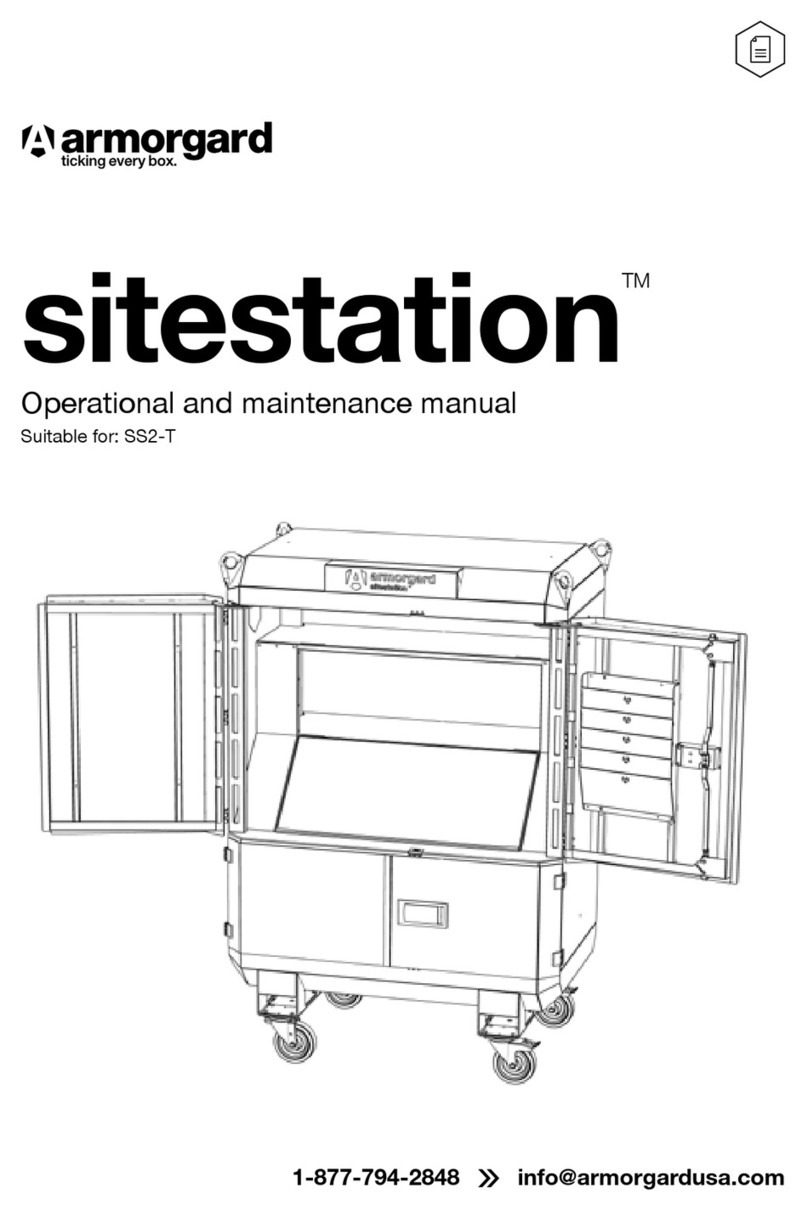
Armorgard
Armorgard sitestation SS2-T Operational And Maintenance Manual
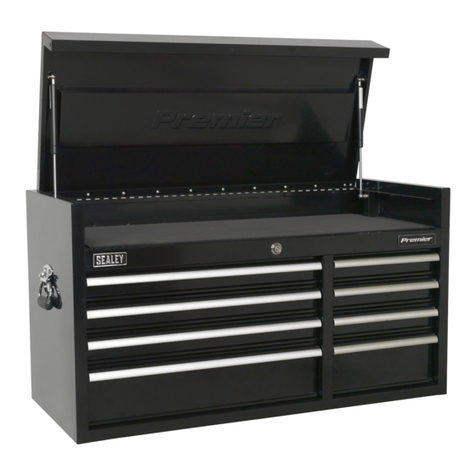
Sealey
Sealey PTB104008 quick start guide
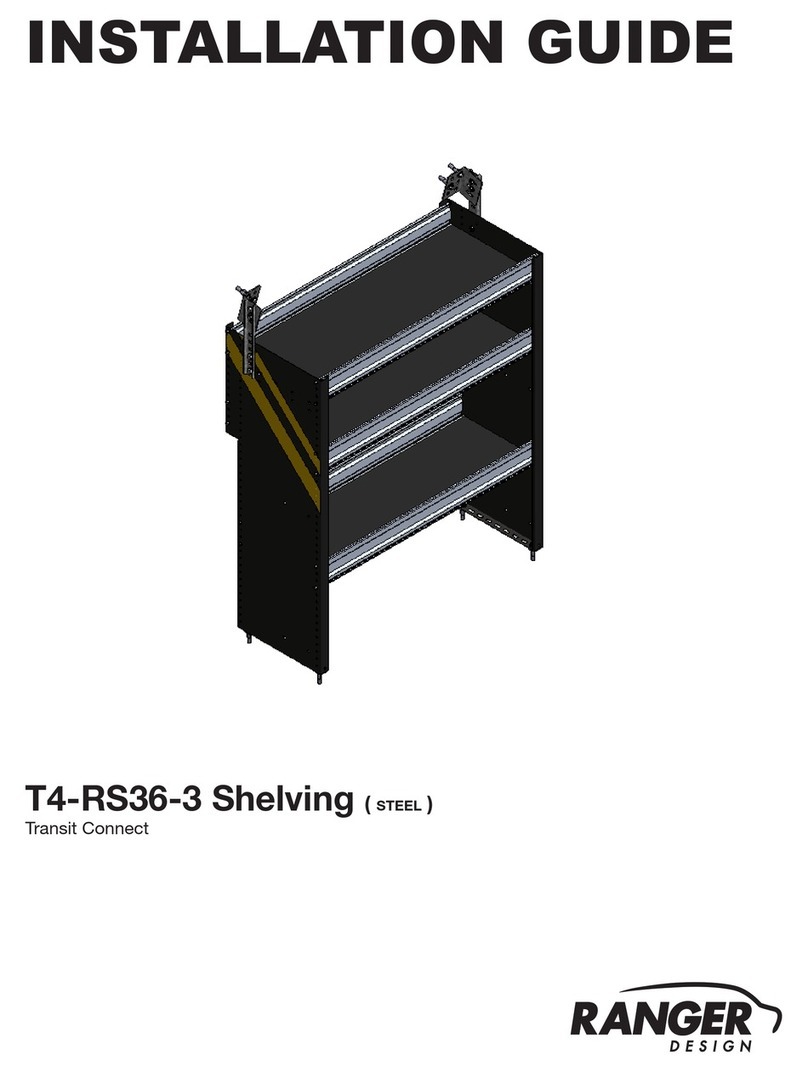
Ranger design
Ranger design T4-RS36-3 installation guide
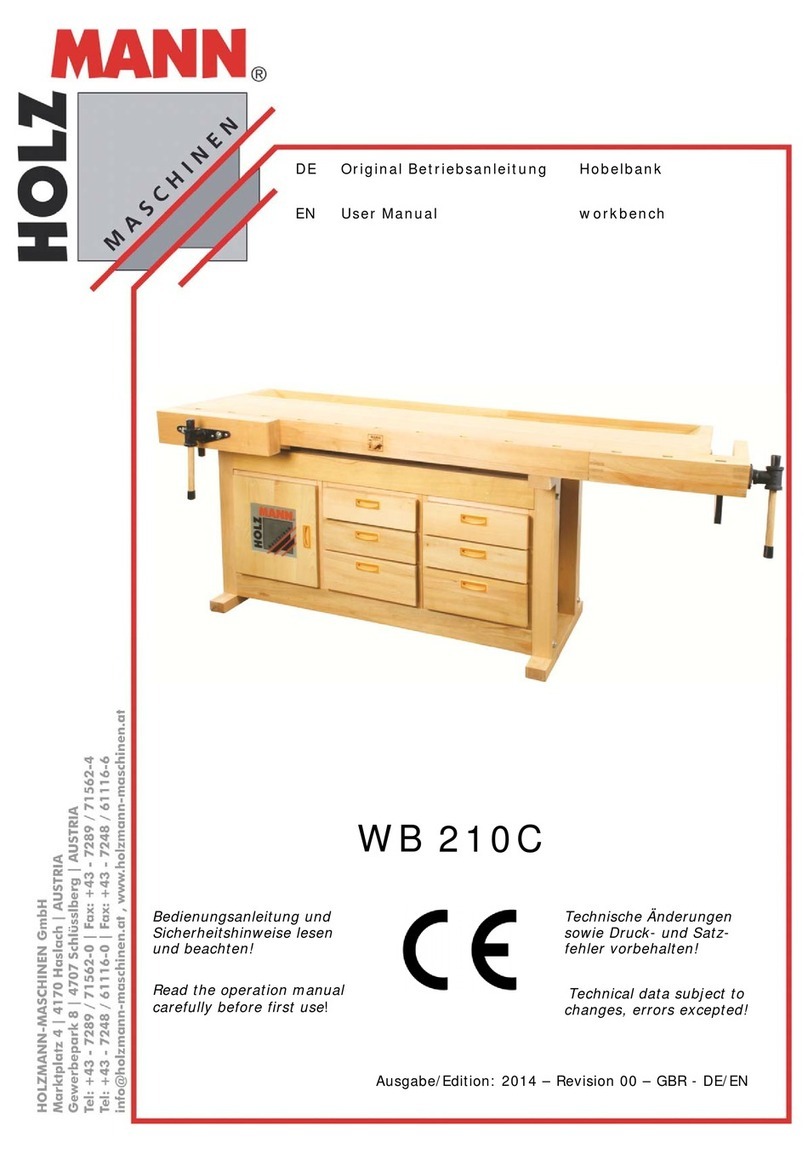
HOLZMANN MASCHINEN
HOLZMANN MASCHINEN WB 210C user manual

Sealey
Sealey AP0618.V3 instructions

kincrome
kincrome Boss K7864BB Operation manual

